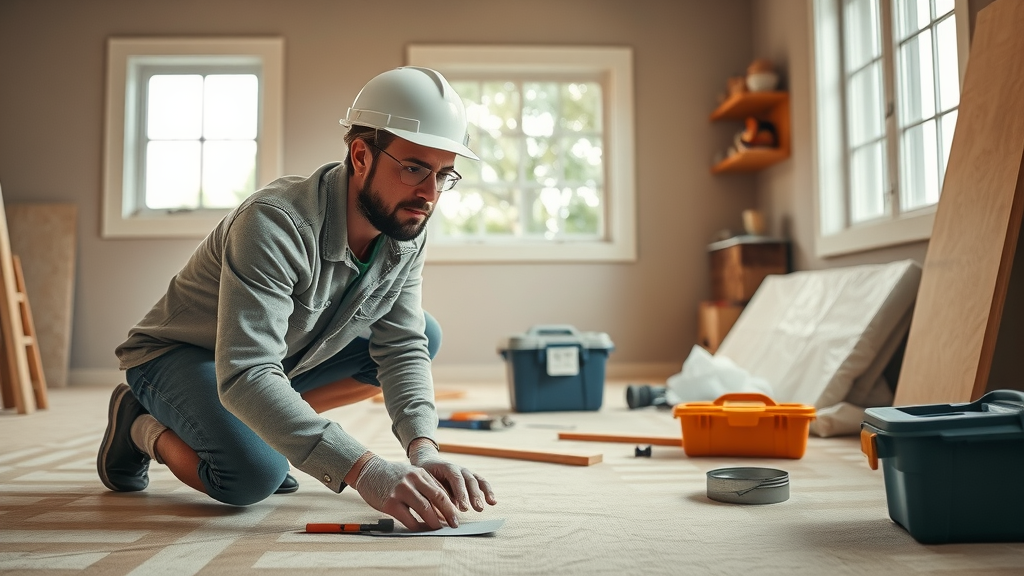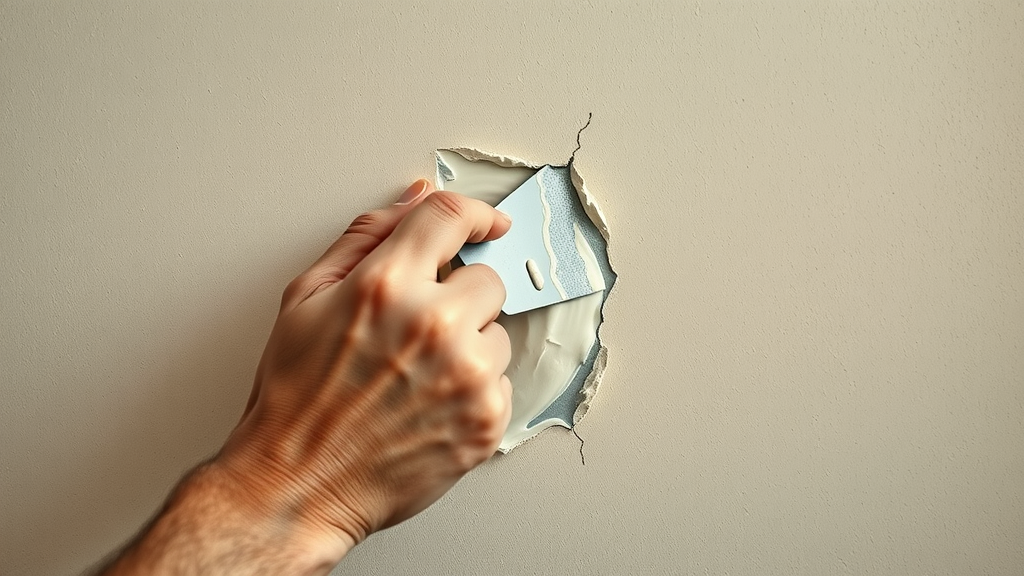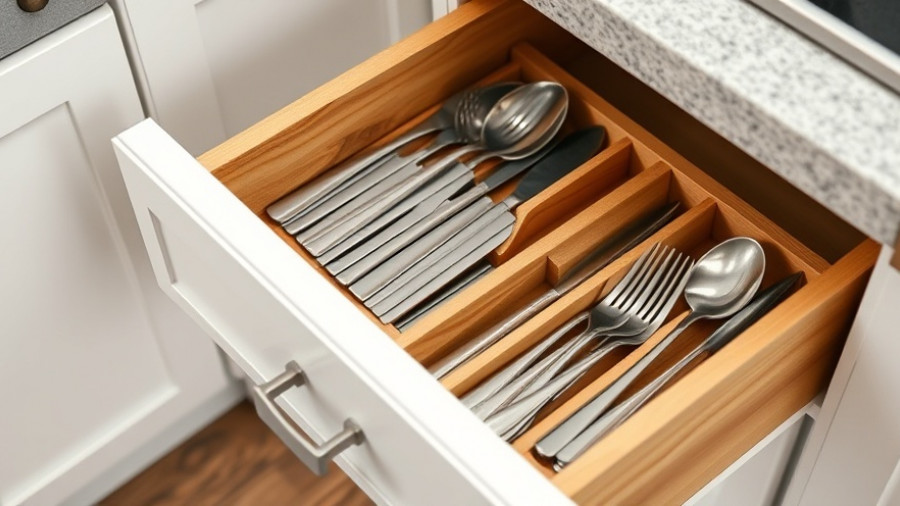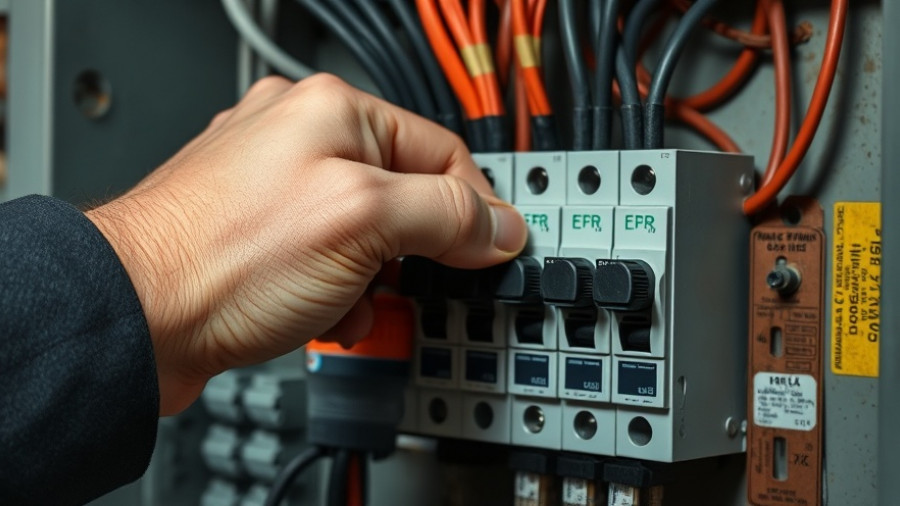Ever wondered if you can fix drywall cracks yourself and achieve professional results without calling in costly contractors?
Are unsightly wall cracks making your home look older than it really is? What if you could restore your walls to a flawless finish—all with tools from your local hardware store? This guide empowers you to fix drywall cracks yourself with simple, effective steps trusted by both DIYers and pros alike. By the end, you’ll be equipped to identify crack types, choose the right materials, and make repairs that last—all while saving time and money.
Why Fix Drywall Cracks Yourself? Time, Cost, and Satisfaction
Cracks in your wall can be more than a mere cosmetic annoyance—left untreated, they may signal foundation issues or lead to more extensive damage over time. Addressing these problems promptly, especially if you fix drywall cracks yourself , has significant benefits. For one, taking DIY action often reduces repair costs typically associated with hiring specialists for drywall repair or foundation wall maintenance. Moreover, learning to make these repairs boosts your confidence, provides a crucial home improvement skill, and often delivers results that rival professional work.
By tackling drywall cracks and performing your own drywall repair , you maintain greater control over your home’s appearance and its structural integrity. Practical know-how not only helps you keep minor issues from becoming major headaches, but it also allows you to monitor the condition of your foundation wall and intervene before real problems develop. Tackling a fix yourself, no matter how simple or complex, offers a sense of pride and accomplishment that’s hard to match.
-
Discover the benefits of DIY drywall crack repair
-
Save money with practical home improvement
-
Enjoy a sense of accomplishment and maintain your foundation wall integrity

What You Need: Essential Tools and Materials to Fix Drywall Cracks Yourself
Before tackling those pesky wall cracks , arm yourself with the right tools and materials. For most jobs, you’ll need a putty knife —invaluable for applying and smoothing joint compound . Additional must-haves include a sanding block, dust mask, utility knife, mesh or paper tape (for cracks wider than a hairline), primer, and matching paint for that seamless finish. For foundations or larger cracks, more robust implements like a wide taping knife and heavy-duty filler might be necessary.
While professionals often use advanced gear for large-scale repairs or when foundation cracks indicate deeper structural problems, most minor cracks and typical drywall crack repairs can be expertly completed with affordable DIY supplies from your local home improvement store. The following table breaks down what's truly essential for do-it-yourselfers compared to what the pros rely on in bigger jobs.
|
DIY Tool/Material |
Function |
Professional Equipment |
Function |
|---|---|---|---|
|
Putty Knife (3"-6") |
Applying & smoothing joint compound |
Professional taping knife (12"+) |
Wider coverage for large repairs |
|
Joint compound (premixed or powder) |
Filling cracks, smoothing surface |
Setting-type joint compound |
Fast drying, high-durability repairs |
|
Mesh or paper tape |
Reinforcing cracks |
Fiberglass tape |
Extra strength for wide/structural cracks |
|
Sanding block/paper |
Smoothing repair area |
Electric sander |
Quick, uniform sanding for large surfaces |
|
Primer & paint |
Finishing, color matching |
Commercial-grade paint sprayer |
Even, efficient application across rooms |
Understanding Drywall Cracks: Identifying Types and Causes for Accurate Repair
Recognizing the specific pattern and cause of your drywall cracks is crucial for a repair that lasts. Not all cracks in your wall mean the same thing—some stem from natural settlement, while others may indicate foundation wall or even foundation cracks that require more serious attention. By learning to distinguish between hairline cracks , vertical cracks , horizontal cracks , and more, you’ll be able to select the correct fix and prevent further damage to your home.
Let’s break down the most common types of drywall crack patterns you might encounter, what they can signal about your home’s structure, and why accurate identification is the first step toward a professional result. Whether you’re facing a single small fissure or multiple intersecting cracks, attention to detail now ensures a more beautiful and enduring fix.
Drywall Crack Patterns: Hairline, Vertical, Horizontal, Diagonal & Wall Cracks
Hairline cracks are thin and surface-level, often caused by minor settling or subtle movements in the wall itself. Most hairline cracks aren’t structural threats, but they can mar an otherwise pristine paint job. Vertical cracks often run parallel to the wall studs and may signal normal expansion, but if they spread across both drywall and the foundation wall, further inspection is warranted.
Horizontal cracks are typically more serious, especially if they appear on your foundation walls —these can be a red flag for ongoing foundation settlement or pressure from soil conditions outside the home. Diagonal cracks may indicate foundation movement and need to be assessed carefully, while widespread wall cracks —especially those that branch or form “stair-step” patterns—could point to underlying issues with your foundation wall .
Regardless of the type, understanding your crack’s pattern helps determine whether you need basic drywall repair or a deeper look into your home’s structural integrity .
Foundation Wall and Foundation Crack Issues: When Wall Cracks Indicate Structural Problems
Sometimes, foundation cracks and foundation wall issues make themselves known through shifting, widening cracks in the drywall above them. If cracks are growing, recurring after each repair, or accompanied by sticking doors and windows, floors sloping, or visible gaps in baseboards or crown molding, there could be a structural problem at play. The source may be related to soil conditions , water damage, or prolonged foundation settlement .
Be cautious: not every crack in your wall is a red flag, but large horizontal cracks, wide gaps, or significant bowing demand professional assessment. Acting quickly protects your home’s long-term structural support ; if signs point to underlying movement, a visit from a structural engineer or foundation repair specialist is your safest option.
“Not all drywall cracks are the same. Learning to identify the type of crack is your first step to a lasting repair.”
Step-by-Step Guide: How to Fix Drywall Cracks Yourself Like a Pro
Armed with the right tools and a clear understanding of your crack’s type and cause, you’re ready to begin the repair process! Each type of wall crack deserves particular attention—what follows is a step-by-step method you can trust for lasting results. Meticulous preparation, the right application of joint compound , and a professional finish are the keys to success, whether you aim to repair drywall in a small bedroom or tackle larger jobs that straddle your foundation wall .
Follow these essential steps to ensure your wall cracks don't come back—and enjoy a seamless, perfectly blended finish once you’re done.
Preparation: Setting Up Your Workspace Before Drywall Repair
Preparation is critical when you fix drywall cracks yourself . Move furniture away from the work area and cover floors with drop cloths to catch dust and debris. Use painter’s tape to protect nearby trim or fixtures, and wear protective gear—including gloves and a dust mask—to ensure safety during sanding and compound mixing.
Lay out all your tools (putty knife, joint compound, sanding block, tape, etc.) in the order you’ll need them. Keep good lighting on hand, either through a nearby window or a portable work lamp, so every crack and flaw is visible. A neatly organized workspace not only reduces mess but also helps keep your repair on track for the flawless result you envision.

Repair Drywall: Filling Hairline Cracks with Joint Compound
To fix a hairline crack , start by gently scraping the crack with a utility knife to widen it just enough for the compound to adhere. Dust away any loose debris. Next, use your putty knife to apply a thin layer of joint compound directly over the crack, pressing it firmly into the groove. Smooth the compound so it extends an inch or two beyond the crack on all sides.
Allow this first coat to dry completely, then sand it lightly with fine-grit sandpaper. If the crack remains visible, apply a second, even thinner coat of joint compound for a perfectly smooth finish. Once dry, sand again. This two-layer method ensures your drywall crack is properly filled and ready to vanish under a fresh coat of paint .
Fixing Vertical, Horizontal, and Diagonal Cracks in Foundation & Drywall
For vertical cracks , horizontal cracks , or diagonal cracks wider than a hairline, reinforce the repair with mesh tape before applying joint compound. After cleaning and widening the crack, embed a strip of mesh tape over it. Use your putty knife to apply a generous coat of joint compound, feathering the edges for a seamless transition to the rest of the wall.
Pay extra attention to cracks on or near a foundation wall . These may require two or three coats of compound, with sanding between each application. Sometimes, a foundation crack may warrant inspection by a professional—especially if the crack continues to lengthen after repairs, or returns frequently. For typical cases, patience and multiple thin layers are your best strategies for an invisible fix.

Finishing Touches: Sanding, Priming, and Painting After Drywall Crack Repair
Once your repair is fully dry, sand the area with a fine-grit sanding block until it feels flush with the surrounding wall. Wipe away all residual dust with a damp cloth. Before painting, apply a quality primer over the patch—this is crucial to ensure a uniform finish and to prevent flashing through the topcoat.
Finish with a matching coat of paint to blend the repaired area perfectly with the rest of your wall. Step back and admire your work—a smooth, crack-free result that will last for years, achieved entirely on your own!

How to Prevent Future Drywall Cracks: Foundation Walls & Seasonal Movement
Once you’ve learned to fix drywall cracks yourself, a proactive approach helps prevent cracks from returning. Foundation settlement and seasonal changes can cause subtle shifting in walls, prompting cracks even after a flawless repair. Monitoring these conditions will safeguard your work and your home.
Consider installing a humidity monitor in your home. High humidity can cause drywall to expand and contract, leading to new cracks. Additionally, visually inspect your foundation wall a few times yearly: catching early signs of foundation settlement lets you intervene before bigger issues develop.
-
Monitor foundation settlement
-
Control indoor humidity to protect drywall
-
Regularly inspect foundation wall for new cracks
Common Mistakes to Avoid When You Repair Drywall Yourself
A flawless finish is possible when you avoid classic pitfalls. One common mistake is failing to properly clean and widen cracks before applying joint compound—this can cause the repair to fail prematurely. Skimping on sanding or forgetting to prime before painting also leads to visible patches, even if the crack is gone.
Never rush between coats of compound; each needs to dry thoroughly to prevent bubbling, shrinkage, or future cracking. Finally, for foundation wall cracks, don’t ignore signs of structural problem : repeated patching without addressing underlying movement almost guarantees the crack will come back. Address both the cosmetic and the root cause for lasting results.
A perfect drywall repair isn’t difficult—if you know what to avoid.
Drywall Repair or Foundation Repair? Deciding When to Call a Professional
Most cosmetic drywall repair tasks are well within reach for handy homeowners. However, cracks wider than a quarter inch, cracks that reappear after multiple fixes, or signs of movement in your foundation wall may point to a significant structural issue requiring a professional’s expertise. Recognizing when to seek help protects your home’s long-term value and safety.
While a DIY fix works for hairline and minor cracks, consult a foundation repair specialist or structural engineer for problems involving bowing walls, heavy diagonal cracks, or symptoms of persistent foundation movement . This ensures you address both cosmetic and structural concerns for true peace of mind.
Warning Signs in Foundation Cracks and Foundation Walls That Need a Specialist
Be alert for expanding foundation wall cracks, step-like cracking in brick or block, water intrusion after rain, or doors and windows that suddenly jam. These warning signs may indicate foundation settlement or shift, and demand an immediate professional assessment to prevent further damage and ensure ongoing structural integrity .
Cracks that run horizontally across your foundation walls are especially concerning, as they often result from pressure due to soil conditions or water buildup outside the home. Don’t attempt to patch these without first confirming the root cause is stable—otherwise, no amount of joint compound will keep the crack away for long.
Home Improvement Tips for Lasting Results After Drywall Repair
After completing a repair, keep your home’s environment stable for the long-term health of your walls. Monitor humidity, keep gutters and downspouts clear to divert water away from your foundation, and patch minor wall cracks as soon as they appear to prevent them from turning into bigger problems.
Don’t forget to keep a record of all major repairs, and periodically re-inspect older fixes for new movement. Stay proactive in your home improvement efforts and you’ll keep your walls crack-free and beautiful for years.
People Also Ask: Answers to Common Drywall Repair Questions
What causes drywall cracks to keep coming back?
Persistent drywall cracks usually result from ongoing foundation movement, improper original repair, or fluctuating humidity levels. Without addressing root causes such as foundation settlement or water damage, cracks are likely to reappear—even after careful repair.
How do you fix drywall cracks in a foundation wall?
To repair cracks in a foundation wall, start by cleaning the area, then fill with a specialty masonry or epoxy filler designed for foundation cracks. Reinforce with mesh tape if needed, apply joint compound, and finish with primer and paint. For wide or repeating cracks, consult a foundation repair expert.
Is it normal for drywall cracks to appear in new homes?
Some small cracks are normal in new construction as the home settles over its first few years. These minor cracks often appear near doorways or windows and are usually cosmetic—but any large or widening cracks should be inspected by a professional.
Do I need to repair minor cracks in my drywall or foundation walls?
Yes, even minor cracks should be repaired promptly to prevent them from growing or admitting moisture, which can lead to water damage or larger repairs down the line. Regular maintenance keeps small problems from becoming big headaches.
How can I tell if a wall crack is structural and requires a foundation repair?
If your crack is over 1/4 inch wide, runs horizontally or diagonally, or repeats after repeated repairs, it may suggest foundation movement. Additional signs such as sticking windows or doors, uneven floors, or cracks in exterior bricks signal it’s time for a foundation or structural specialist’s opinion.
Frequently Asked Questions About How to Fix Drywall Cracks Yourself

-
Can drywall cracks indicate foundation problems?
Yes. Large horizontal, stair-step, or diagonal cracks—especially wider than 1/8 inch—can indicate foundation movement and may require a professional inspection. Small vertical or hairline cracks are usually caused by normal settling or humidity changes and are generally not serious.
-
What are the best products for joint compound?
Great options include all-purpose joint compound (like Sheetrock All Purpose) for general use, setting-type compounds (like Durabond or Easy Sand) for fast, durable repairs, and lightweight or midweight compounds for easier sanding and smoother finishes. Many pros favor CertainTeed Lite-AllPurpose or Beadex Lite for their workability.
-
How quickly can you fix drywall cracks yourself?
Small cracks can usually be repaired in a few hours with spackle or joint compound—dry, sand, and paint all in one day. Larger cracks may require taping and multiple coats of compound, with drying time between layers. In that case, expect the process to take 1 to 2 days.
-
Should I paint immediately after drywall repair?
No. You should wait for the joint compound to fully dry, usually about 24 hours. Then sand the surface smooth, apply a primer to seal the area, and only then should you paint. Skipping the primer can lead to visible patches or uneven paint texture.
Quick-Reference Table: Troubleshooting Common Wall Cracks While You Fix Drywall Cracks Yourself
|
Type of Crack |
Probable Cause |
Recommended Repair Method |
Risk Level |
Prevention Tips |
|---|---|---|---|---|
|
Hairline Crack |
Normal settling, humidity changes |
Apply joint compound, sand, paint |
Low |
Maintain stable indoor humidity |
|
Vertical Crack |
Minor settling or framing movement |
Reinforce with mesh tape, joint compound |
Medium |
Monitor for changes, inspect foundation wall |
|
Horizontal Crack |
Foundation wall pressure, soil conditions |
Masonry filler or call professional if expanding |
High |
Ensure proper grading, check drainage |
|
Diagonal Crack |
Foundation movement, settlement |
Reinforce with mesh tape, monitor changes |
Medium-High |
Address foundation settlement early |
|
Widespread Wall Cracks |
Significant structural issues |
Call structural engineer/foundation repair |
Very High |
Monitor house movement, act promptly |
Take Action: Start Your Home Improvement Journey and Fix Drywall Cracks Yourself
Don’t wait for small cracks to become major repairs—gather your supplies, follow these steps, and enjoy flawless walls with the satisfaction of a true DIY home improvement success!
 Add Row
Add Row  Add
Add 




Write A Comment